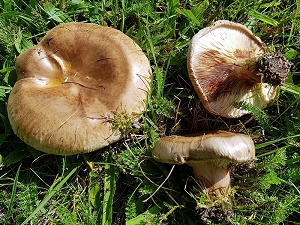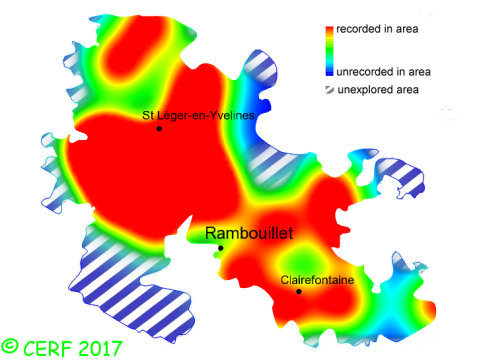| Paxillus involutus (Batsch:Fr.) Fr. |
|
|
|
|
|
|
The cap is olive green brown, convex then expanded and depressed or funnel-shaped; its margin is inrolled deeply and long time, and typically roughly grooved. The cap surface is becoming smooth with age, as if varnished, viscid in damp weather, especially at the centre, more downy towards rim. The stem is brown, same colour as cap, rather short, staining darker brown when bruised or manipulated, without ring. The flesh is cream to pale ochre, more fulvous in stem base, turning brown when bruised; its taste is mild to slightly acidic; the odour is varying, pleasant or acrid or not distinctive; its texture is fibrous. The gills are yellow then brown, turning dark brown when pressed, decurrent, crowded, easily detached from cap . The spore print is olive brown. This species is mycorrhizal or saprophytic. It grows on the ground, in parks, gardens, lawns, forests, on a rather acid soil, with birch, poplar, beech, oak, fir, spruce, pine, larch. The fruiting period takes place from April to December.
Chemical tests : none. Distinctive features : Brown cap and stem; gills decurrent and darkening when pressed, easily detached from cap; margin remaining inrolled when mature; short stem; grows mostly with birch Paxillus involutus is very frequent and very widely present in the forest of Rambouillet, and is very frequent, more generally speaking . | ||
|
page updated on 14/01/18

